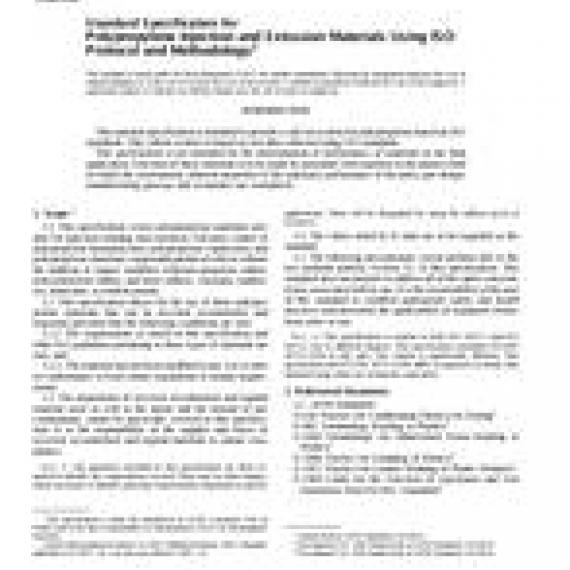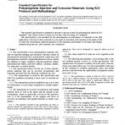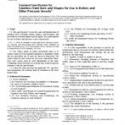No products
ASTM D5857-02
ASTM D5857-02 Standard Specification for Polypropylene Injection and Extrusion Materials Using ISO Protocol and Methodology
standard by ASTM International, 03/10/2002
Full Description
1.1 This specification covers polypropylene materials suitable for injection molding and extrusion. Polymers consist of polypropylene homopolymers, polypropylene copolymers, and polypropylene-elastomer compounds produced with or without the addition of impact modifiers (ethylene-propylene rubber, polyisobutylene rubber, and butyl rubber), colorants, stabilizers, lubricants, or reinforcements.
1.2 This specification allows for the use of those polypropylene materials that can be recycled, reconstituted, and reground, provided that the following conditions are met:
1.2.1 The requirements as stated in this specification and other ISO guidelines pertaining to these types of materials are met, and
1.2.2 The material has not been modified in any way to alter its conformance to food contact regulations or similar requirements.
1.3 The proportions of recycled, reconstituted, and regrind material used, as well as the nature and the amount of any contaminant, cannot be practically covered in this specification. It is the responsibility of the supplier and buyer of recycled, reconstituted, and regrind materials to ensure compliance.
Note 1 - The properties included in this specification are those required to identify the compositions covered. There may be other requirements necessary to identify particular characteristics important to specific applications. These will be designated by using the suffixes given in Section 5.
1.4 The values stated in SI units are to be regarded as the standard.
1.5 The following precautionary caveat pertains only to the test methods portion, Section 13, of this specification: This standard does not purport to address all of the safety concerns, if any, associated with its use. It is the responsibility of the user of this standard to establish appropriate safety and health practices and determine the applicability of regulatory limitations prior to use.
Note 2 - This specification is similar to both ISO 1873-1 and ISO 1873-2, but to different degrees. This specification resembles ISO/DIS 1873-1-1994 in title only. The content is significantly different. This specification and ISO/DIS 1873-2-1994 differ in approach or detail; data obtained using either are technically equivalent.


































